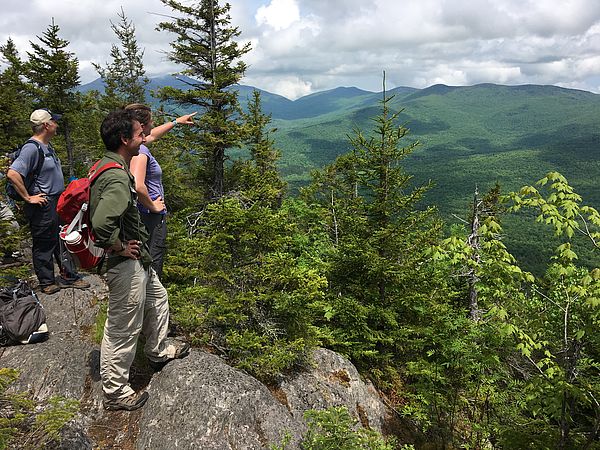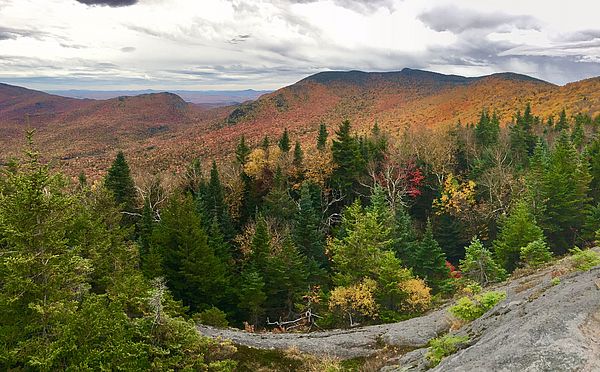There are really big things going on in the Cold Hollow to Canada region. If you have not yet heard, The Nature Conservancy (TNC) has bought out their Vermont Land Trust (VLT) partner for the Calavale property that includes the Burnt Mountain ridgeline in Montgomery, and is to be placed in a forever wild easement. Cold Hollow to Canada is pleased that TNC and VLT chose our region to make this happen. The lot is a 5,500 acre parcel that is mostly in Montgomery but also includes some land in Eden, Westfield, Lowell and Belvidere. This parcel is part of the original 26,000 acres of Atlas Timberlands purchased in 1997. These lands are slowly being sold to further conservation efforts across the state. Most of the land will remain as working forest, but this one parcel has now been established as future wilderness. Income generation will still be part of this landscape through the sale of carbon credits, but no harvesting of timber, sugaring or mechanized recreation will take place from here on out. The Northeast Wilderness Trust will hold a forever wild easement on the property.
In a forever wild easement, the landowner generally relinquishes the rights to build structures and roads, subdivide, conduct commercial or industrial activities, farm, and cut timber.
The property is not currently a pristine wilderness. It has had a long history of logging and was recently part of the working forest under the combined TNC/VLT ownership. It may better be described as what Tom Butler of the Foundation for Deep Ecology calls “self-willed land”. Similar to the Adirondack State Park in New York, the past history included intense and sometimes exploitative use of the land. But this forest will now be allowed to grow old and in the next 100-150 years start to exhibit the characteristics of an old forest. An old forest, (hardwood forest in this case) as defined by the state of Vermont, has a portion of the trees at 150 years old or older, but also has a number of disturbance gaps with trees of all ages, dead standing trees, and an abundance of dead trees on the ground slowly turning back into soil. This structurally complex forest provides a myriad of habitat niches for a diverse suite of wildlife species. Old forests also protect water quality, provide opportunities for adaptation to a changing climate, and provide a benchmark for research in how to better manage the working landscape through silviculture.
The state of Vermont has very, very little old forest only 3-4% and most of it is found in tiny sections, often less than 50 acres in size.
Old forests are currently not a functional component of the Vermont landscape. To be truly functional the Vermont Department of Fish & Wildlife defines an old forest needing more like 4,000 acres in one unfragmented block. The 4,000 acre minimum block size correlates to the natural disturbance regime in the Northern Forest which will be able to accommodate large natural disturbances over time. The Vermont Conservation Design a recent scientific work, now available in a published format, recommends that we strive for 15% of the Vermont forested landscape to be in an old forest condition.
Why do we need old forests and self-willed land? The world population is gaining on 8 billion people. To put this in perspective, the population 60 years ago was only 3.5 billion. This is a massive change and is causing our planet to be extremely stressed. Scientists have recently coined the current geological time frame as the Anthropocene (human driven). The result is the greatest extinction event since the dinosaur demise, 65 million years ago. The answer and the antidote to the problem is a landscape that includes a core habitat which is connected across the landscape. This is the mission of Cold Hollow to Canada.
The Burnt Mountain project creates an anchor block of self-willed land that is surrounded by well managed working forests allowing species movement across the greater landscape of the Northern Forest. The Northern Forest geographically runs from west of the Adirondacks to the tip of Cape Breton and is the most intact broad-leaved temperate forest in the world. This is our forest, and a forest that has global significance. We at Cold Hollow to Canada aim to protect it, and thanks to our partners we just took one great leap forward in our own backyard.
To learn more about this project, please visit the following links:
NEK forestland conserved as Vermont goes into the carbon storage business, VTDigger
And to read about carbon storage, visit last season's newsletter article Carbon Sequestration for Climate Change.

